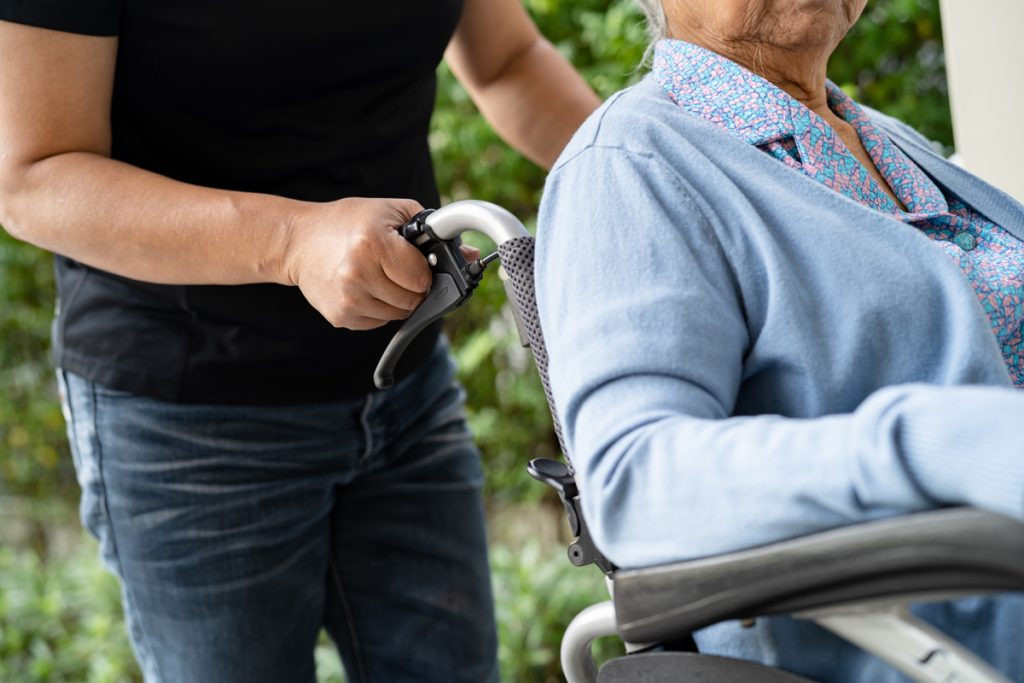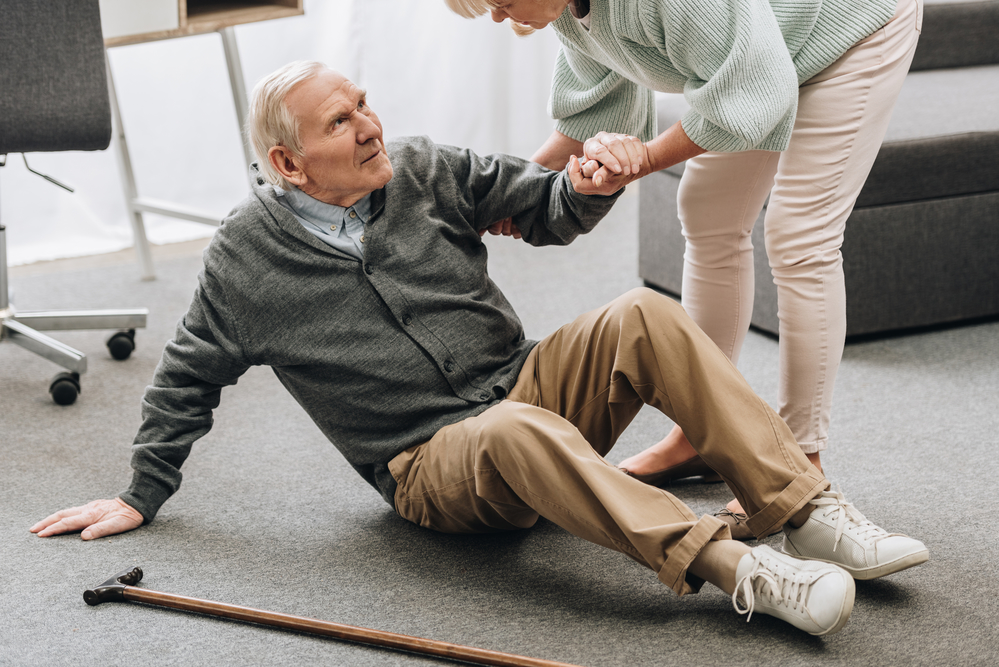Using A Cane
Learn how to properly use a cane to stand up and walk, sit down onto a chair and go up and down stairs. Read on to learn more.
To Stand Up And Walk
- Quad cane: Push up from the armrest of the chair or from the bed to a standing position. Grasp the cane and make sure you are steady.
- Standard cane: Hold the handle of the cane in one hand as you push up from the armrest. Once standing, pause to be sure you are steady.
- Move the cane forward a short distance. Make sure you keep the cane a few inches out to the side.
- Step forward with your injured or weaker leg first, putting weight onto the cane. Then take a step with your stronger leg.
- Look up to see where you are going, not always down at the floor.
To Sit Down Onto A Chair
Back up until you feel the chair against your legs. Instructions based on type of cane are:
- Quad cane: Place both hands on the chair arm. Ease down into the chair.
- Standard cane: Hold the cane in one hand and the armrest with other hand. Ease down into the chair.
To Go Up The Stairs
Push down on the cane. Step up with your stronger or uninjured leg. Then step up to the same step with your weaker or injured leg. Bring the cane up.
To Go Down The Stairs
Place your cane down one step. Step down with your weaker or injured leg. Then step down with your uninjured leg.
If you have a railing, hold onto it with your other hand. If you use a large quad cane, you may need to turn it sideways so it fits on the step.
To Prevent Falls
- Be sure your cane is in good condition. Your cane should have grooved rubber tips covering the bottom of each leg(s) of the cane.
- Avoid throw rugs and waxed floors.
- Be careful when walking on wet or slippery surfaces.
- Wear low-heeled, tie shoes for better support.
Follow your physician’s orders regarding any limits on your activities.
Source: https://my.clevelandclinic.org/health/articles/15541-how-to-use-a-cane
Having a home safety assessment performed to identify fall risk and provide safety recommendations followed up by installation, can greatly reduce your risk of falls in your home environment. You are unique and your needs are too!
Related Posts




